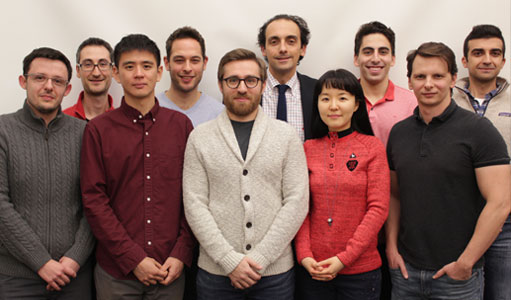New Tool Detects Unsafe Security Practices in Android Apps
Open-source CRYLOGGER is the first tool that detects cryptographic misuses by running the Android app instead of analyzing its code.
Open-source CRYLOGGER is the first tool that detects cryptographic misuses by running the Android app instead of analyzing its code.
With multiple grants, Professor Luca Carloni works toward developing design methodologies and system architectures for heterogeneous computing. He foresees computing systems both in the cloud and at the edge of the cloud will become more heterogeneous.
For a while, many systems in the cloud, in servers, and in computers, were based on homogeneous multi-core architectures where multiple processors are combined in a chip and multiple chips on a board. But all, in the first approximation, are copies of the same type of processor.
“Now, it is not the case,” said Carloni, who has worked on heterogeneous computing for the past 10 years. “And we have been one of the first groups to really, I think, understand this transition from a research viewpoint and change first our research focus and then our teaching efforts to address all the issues.”
Heterogeneous means that a system is made of components and each component has a different nature. Some of these components are processors that execute software – application software and system software while other components are accelerators. An accelerator is a hardware module specialized to execute a particular function. Specialization provides major benefits in terms of performance and energy efficiency.
Heterogeneous computing, however, is more difficult. Compared to its homogeneous counterpart, heterogeneous systems bring new challenges in terms of hardware-software interactions, access to shared resources, and diminished regularity of the design.
Another aspect of heterogeneity is that components often come from different sources. Let’s say that a company builds a new system-on-chip (SoC), a pervasive type of integrated circuit that is highly heterogeneous. Some parts may be designed anew inside the company, some reused from previous designs, while others may be licensed from other companies. Integrating these parts efficiently requires new design methods.

Carloni’s lab, the System-Level Design Group, tackles these challenges with the concept of embedded scalable platforms (ESP). A platform combines a flexible computer architecture and a companion computer-aided design methodology. The architecture defines how the computation is organized among multiple components, how the components are interconnected, and how to establish the interface between what is done in software and what is done in hardware. Because of the complexity of these systems, many important decisions must be made early, while room must be left to make adjustments later. The methodology guides software programmers and hardware engineers to design, optimize, and integrate their novel solutions.
By leveraging ESP, the SLD Group is developing many SoC prototypes, particularly with field programmable gate arrays (FPGAs). With FPGAs, the hardware in the system can be configured in the field. This allows the chance to explore several optimizations for the target heterogeneous system before committing to the fabrication of expensive silicon.
All of these topics are covered in System-on-Chip Platforms, a class Carloni teaches each fall semester. Students have to design an accelerator — not just for one particular system, but also with a good degree of reusability so that it can be leveraged across multiple systems. Earlier this year, Carloni presented a paper that describes this course at the 2019 Workshop on Computer Architecture Education.
“In developing System-on-Chip Platforms we put particular emphasis on SoC architectures for high-performance embedded applications,” he said. “But we believe that the course provides a broad foundation on the principles and practices of heterogeneous computing.”
In a Proceedings of the IEEE focused on Electronic Design Automation (EDA), Carloni and three other editors bring together perspectives on the future and challenges of EDA.
Find open faculty positions here.
President Bollinger announced that Columbia University along with many other academic institutions (sixteen, including all Ivy League universities) filed an amicus brief in the U.S. District Court for the Eastern District of New York challenging the Executive Order regarding immigrants from seven designated countries and refugees. Among other things, the brief asserts that “safety and security concerns can be addressed in a manner that is consistent with the values America has always stood for, including the free flow of ideas and people across borders and the welcoming of immigrants to our universities.”
This recent action provides a moment for us to collectively reflect on our community within Columbia Engineering and the importance of our commitment to maintaining an open and welcoming community for all students, faculty, researchers and administrative staff. As a School of Engineering and Applied Science, we are fortunate to attract students and faculty from diverse backgrounds, from across the country, and from around the world. It is a great benefit to be able to gather engineers and scientists of so many different perspectives and talents – all with a commitment to learning, a focus on pushing the frontiers of knowledge and discovery, and with a passion for translating our work to impact humanity.
I am proud of our community, and wish to take this opportunity to reinforce our collective commitment to maintaining an open and collegial environment. We are fortunate to have the privilege to learn from one another, and to study, work, and live together in such a dynamic and vibrant place as Columbia.
Sincerely,
Mary C. Boyce
Dean of Engineering
Morris A. and Alma Schapiro Professor